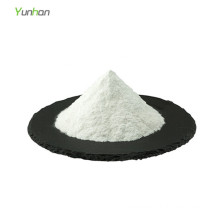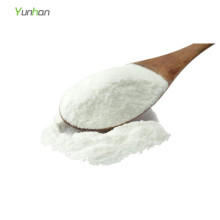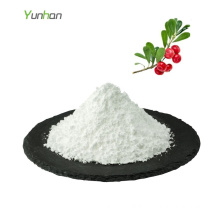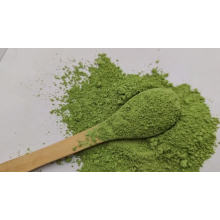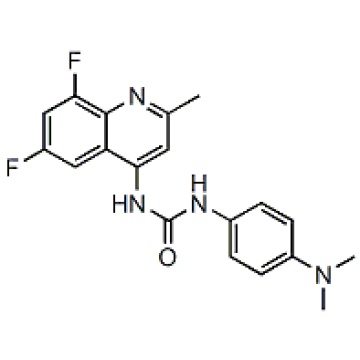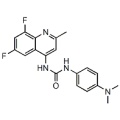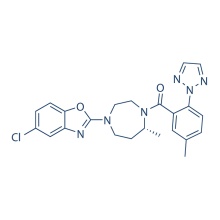SB408124 288150-92-5
Product Description
.cp_wz table {border-top: 1px solid #ccc;border-left:1px solid #ccc; } .cp_wz table td{border-right: 1px solid #ccc; border-bottom: 1px solid #ccc; padding: 5px 0px 0px 5px;} .cp_wz table th {border-right: 1px solid #ccc;border-bottom: 1px solid #ccc; padding: 5px 0px 0px 5px;}
Molecular Weight: 356.37 SB408124 is a non-peptide antagonist for OX1 receptor with Ki of 57 nM and 27 nM in both whole cell and membrane, respectively, exhibits 50-fold selectivity over OX2 receptor.
SB-408124 binds hypocretin type 1 receptor (HcrtR1) with pKi values of 7.57. Calcium mobilization studies shows that SB-408124 is a
functional antagonist of the OX1 receptor with a affinity of
approximately 50-fold selectivity over the OX2 receptor. A
recent study indicates that pretreatment of primary cultures of rat
astrocytes with SB-401824 before Orexin A administration significantly
reduced the stimulatory action of Orexin A on both basal and
forskolin-acivated cAMP production.
SB-408124 (30 μg/10 μL, administered intracerebroventricularly)
decreases Orexin-A induced water intake in Wistar rats.
Intracerebroventricularly administered Orexin-A (30 μg/10 μL) blocks the
vasopressin (VP) level increase induced by either histamine or 2.5%
NaCl administration, and this blocking effect is moderated by
pretreatment with SB-408124. Intracerebroventricular
pretreatment with SB-408124 (50 mM, 5 μL/h) prevents Bicuculline
(BIC)-induced increases in endogenous glucose production (EGP).
Protocol(Only for Reference)
Kinase Assay:
[1]
Animal Study:
[3]
Conversion of different model animals based on BSA (Value based on data from FDA Draft Guidelines)
For example, to modify the dose of resveratrol used for a mouse (22.4 mg/kg) to a dose based on the BSA for a rat, multiply 22.4 mg/kg by the Km factor for a mouse and then divide by the Km factor for a rat. This calculation results in a rat equivalent dose for resveratrol of 11.2 mg/kg.
Chemical Information
Molarity Calculator
Dilution Calculator
Molecular Weight Calculator
Contact us if you need more details on 288150-92-5 SB408124. We are ready to answer your questions on packaging, logistics, certification or any other aspects about 288150-92-5、SB408124 288150-92-5. If these products fail to match your need, please contact us and we would like to provide relevant information.
Molecular Weight: 356.37 SB408124 is a non-peptide antagonist for OX1 receptor with Ki of 57 nM and 27 nM in both whole cell and membrane, respectively, exhibits 50-fold selectivity over OX2 receptor.
SB-408124 binds hypocretin type 1 receptor (HcrtR1) with pKi values of 7.57. Calcium mobilization studies shows that SB-408124 is a
functional antagonist of the OX1 receptor with a affinity of
approximately 50-fold selectivity over the OX2 receptor. A
recent study indicates that pretreatment of primary cultures of rat
astrocytes with SB-401824 before Orexin A administration significantly
reduced the stimulatory action of Orexin A on both basal and
forskolin-acivated cAMP production.
SB-408124 (30 μg/10 μL, administered intracerebroventricularly)
decreases Orexin-A induced water intake in Wistar rats.
Intracerebroventricularly administered Orexin-A (30 μg/10 μL) blocks the
vasopressin (VP) level increase induced by either histamine or 2.5%
NaCl administration, and this blocking effect is moderated by
pretreatment with SB-408124. Intracerebroventricular
pretreatment with SB-408124 (50 mM, 5 μL/h) prevents Bicuculline
(BIC)-induced increases in endogenous glucose production (EGP).
Protocol(Only for Reference)
Kinase Assay:
[1]
| Whole cell binding assays | After overnight culture in 96-well Packard Cultur plates, the medium is discarded and cells are incubated in buffer containing 150 mM NaCl, 20 mM HEPES and 0.5% bovine serum albumin (pH 7.4) for 60 minutes at 25 °C. Saturation studies are carried out by incubating cells with a range of concentrations of [3H]SB-408124 (0.2–24 nM); the total assay volume is 250 μL. Protein content is assayed by lysing cells with 0.1M NaOH and using the Bradford method with bovine serum albumin (BSA) as a standard. Association kinetic studies are performed by measuring the specific binding of [3H]SB-408124 (3 nM) at 1–60 minutes after addition of [3H]SB-408124. All assays are terminated by washing the cells three times with 250μL ice-cold phosphate-buffered saline. A volume of 100 μL of Microscint 40 is added to each well and the plate is left at room temperature for 2 hours. Cell-associated radioactivity is then measured using a Packard Topcount, with a count time of 2 minute/well. |
|---|---|
| Membrane-based SPA binding assays | CHO-K1_OX1 cell membranes (75 μg/mL) are precoupled by shaking with wheatgerm-agglutinin polyvinyltoluene (WGA-PVT) scintillation proximity assay (SPA) beads (5 mg/mL) in buffer containing 25 mM HEPES, 2.5 mM MgCl2, 0.5 mM EDTA and 0.025% bacit |
Animal Study:
[3]
| Animal Models | Male Wistar rats | ||
|---|---|---|---|
| Formulation | SB-408124 is dissolved in saline. | ||
| Dosages | 30 μg/10 μL | ||
| Administration | Intracerebroventricularly (i.c.v.) injected into the lateral ventricle of the rat. | ||
| Solubility | 30% propylene glycol, 5% Tween 80, 65% D5W, 30 mg/mL | ||
| * Please note that Selleck tests the solubility of all compounds in-house, and the actual solubility may differ slightly from published values. This is normal and is due to slight batch-to-batch variations. | |||
Conversion of different model animals based on BSA (Value based on data from FDA Draft Guidelines)
| Species | Baboon | Dog | Monkey | Rabbit | Guinea pig | Rat | Hamster | Mouse |
| Weight (kg) | 12 | 10 | 3 | 1.8 | 0.4 | 0.15 | 0.08 | 0.02 |
| Body Surface Area (m2) | 0.6 | 0.5 | 0.24 | 0.15 | 0.05 | 0.025 | 0.02 | 0.007 |
| Km factor | 20 | 20 | 12 | 12 | 8 | 6 | 5 | 3 |
| Animal A (mg/kg) = Animal B (mg/kg) multiplied by | Animal B Km |
| Animal A Km |
For example, to modify the dose of resveratrol used for a mouse (22.4 mg/kg) to a dose based on the BSA for a rat, multiply 22.4 mg/kg by the Km factor for a mouse and then divide by the Km factor for a rat. This calculation results in a rat equivalent dose for resveratrol of 11.2 mg/kg.
| Rat dose (mg/kg) = mouse dose (22.4 mg/kg) × | mouse Km(3) | = 11.2 mg/kg |
| rat Km(6) |
Chemical Information
| Molecular Weight (MW) | 356.37 |
|---|---|
| Formula | C19H18F2N4O |
| CAS No. | 288150-92-5 |
| Storage | 3 years -20℃Powder |
|---|---|
| 6 months-80℃in solvent (DMSO, water, etc.) | |
| Synonyms | |
| Solubility (25°C) * | In vitro | DMSO | 36 mg/mL (101.01 mM) |
|---|---|---|---|
| Water | <1 mg/mL ( | ||
| Ethanol | <1 mg/mL ( | ||
| In vivo | 30% propylene glycol, 5% Tween 80, 65% D5W | 30 mg/mL | |
| | |||
| Chemical Name | 1-(6,8-difluoro-2-methylquinolin-4-yl)-3-(4-(dimethylamino)phenyl)urea |
|---|
Molarity Calculator
Dilution Calculator
Molecular Weight Calculator
Contact us if you need more details on 288150-92-5 SB408124. We are ready to answer your questions on packaging, logistics, certification or any other aspects about 288150-92-5、SB408124 288150-92-5. If these products fail to match your need, please contact us and we would like to provide relevant information.
Product Categories : Neuronal Signaling > OX Receptor Inhibitor
Premium Related Products
Other Products
Hot Products
Astragaloside AChlortetracycline HCl 64-72-2Paclitaxel 33069-62-4Dexamethasone Acetate 1177-87-3Dinaciclib (SCH727965) 779353-01-4CHIR-124 405168-58-3Ro3280 1062243-51-9TAME 901-47-3CCG-1423 285986-88-110058-F4 403811-55-2Dabigatran (BIBR 953) 211914-51-1H 89 2HCl 130964-39-5T0901317 293754-55-9Aprepitant 170729-80-3Turofexorate Isopropyl (XL335) 629664-81-9BMS-378806 357263-13-9

